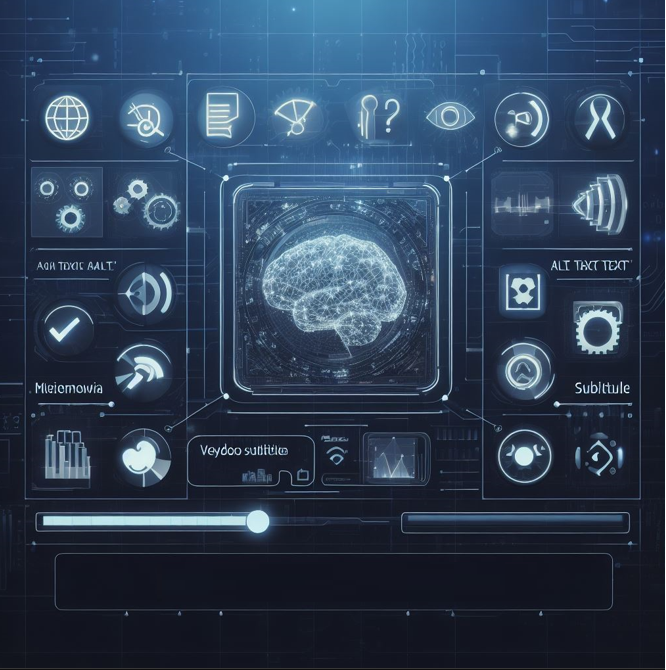AI Meets WYSIWYG Editors: The Future of Smart Content Creation
 Idera Dev Tools
Idera Dev Tools
WYSIWYG Editors, an acronym for “What You See Is What You Get”, has become a cornerstone in the realm of digital content creation. But the journey to today’s intuitive interfaces wasn’t a sprint; it was a marathon.
In the early days of computers, only people who knew a lot about technology could make documents. Text was written in raw code, and there wasn’t a way to see right away what the finished product would look like. When we move forward to the late 1970s and early 1980s, word computers and desktop publishing tools came out, which made it easier to make content visually.
When the internet grew rapidly in the 1990s and 2000s, web-friendly WYSIWYG tools were in high demand. Regardless of technical ability, these tools let users create web pages with pictures, writing, and multimedia and see how they looked. Froala emerged to address the demand for advanced, web-compatible content creators.
In the digital age, WYSIWYG tools are robust platforms that work with CMS, websites, and mobile apps. This implies anyone can create content.
Modern Tech and AI/ML’s Impact on Content Creation
AI and ML, once arcane technical words, are now essential to current technologies. But what do they mean?
AI is the creation of algorithms that machines can perform tasks traditionally done by smart people. Data-driven machine learning teaches computers to improve and change without being told.
How do AI and ML alter information creation?
Imagine publishing something for your website and getting immediate feedback on how to improve readability and SEO. Perhaps when you upload an image, your editor would immediately recommend an appropriate “alt text” based on its subject matter to ensure everyone can view it. Despite seeming miraculous a few years ago, AI and ML make these things possible.
WYSIWYG editors employ massive quantities of data to train their algorithms to predict what you will write, check your grammar, offer style tips, and even suggest content organization based on your audience. There’s little distinction between human innovation and artificial help. This collaboration improves material production.
Enhanced WYSIWYG Editor User Experience with AI
In the bustling realm of content creation, the line between machines and man continues to thin. With the latest advancements in AI, WYSIWYG editors aren’t just about visual representation anymore; they are becoming increasingly intelligent, aiming to make the user experience smoother, more intuitive, and supremely efficient. Let’s delve into how AI is enhancing the user experience in these editors.

Predictive Text and Content Ideas
Remember when you were typing a message and your phone offered the next word? It made the process go faster. Thanks to AI, this predictive text feature that used to only be available on our phones is now built into current WYSIWYG editors.
As you type, the editor can guess and suggest whole words or sentences that make sense with what you’re writing. This not only speeds up the writing process but can also help you make stories that make more sense and are more interesting. AI-driven ideas can also suggest related topics or subheadings based on the main theme of your content to make sure you cover all the important points.
Image recognition/auto-tagging/alt text
The visible aspects of digital content matter. However, using the same “alt text” for every photo can get boring. AI intervenes.
WYSIWYG editors can now quickly identify image subjects thanks to improved image recognition algorithms. The editor can add “alt text,” or descriptive tags, to any photo, including portraits, market scenes, and calm scenes. The image is easier for blind people to access and better for SEO.
Natural Language Processing improves style and grammatical advice.
Natural Language Processing (NLP) explores computer-human communication. Editing has changed drastically using NLP. Checking spelling no longer works. WYSIWYG tools with NLP can now understand your meaning, emotions, and text.
These tools can immediately inform you what’s wrong with your writing, help you modify your sentence structure, and suggest new words to make it more engaging. AI makes writing well and using right language possible.
Customization and Flexibility in the WYSIWYG Editor
The era of one-size-fits-all interfaces is waning. In its place, AI-powered personalization is stepping in, offering a tailored content editing experience that adapts to individual nuances.
AI-Driven Editing Experience
As users interact with a WYSIWYG editor, AI quietly observes, learns, and understands their habits. Whether it’s the frequent use of certain tools, preferred content layouts, or even writing styles, AI picks up on these patterns. Over time, the editor starts anticipating the user’s moves, arranging tools or suggesting content based on past behaviors, ensuring a smoother, more intuitive workflow.
Adaptive Interface Examples
Modern WYSIWYG editors now come equipped with adaptive interfaces. For instance, if a user frequently embeds videos or utilizes certain fonts, those options might be prominently displayed or quickly accessible. Similarly, for users who often draft long-form content, the editor might prioritize tools related to structuring or linking, all in an effort to make the content creation process as efficient as possible.
Real-time Content Optimization with AI
In the digital age, content isn’t just about articulation but also about optimization. AI steps in here, turning WYSIWYG editors into real-time consultants that enhance content’s reach and readability.
SEO Recommendations on the Fly
As you draft, AI analyzes the content, gauging its SEO potential. Keywords, meta descriptions, and content length are scrutinized, and instant suggestions pop up. Missed a potential keyword? The editor nudges you. Overstuffing phrases? You’re alerted. It’s like having an SEO expert peering over your shoulder, guiding you to make your content search-engine friendly.
Intelligent Content Structuring
For readers to be interested, you need an interesting beginning, a smooth flow, and an interesting ending. AI can help with this by suggesting good headers, helping to divide material into sections, and even suggesting good places for images. As a result? Content that is not only well-written but also well-organized, so readers can stay interested and easily understand.

The Power of Integration: WYSIWYG, AI, and Major SDKs
The digital ecosystem thrives on integration. As technologies advance, the need for cohesive and seamless interaction between platforms grows. AI-powered WYSIWYG editors, when integrated with major SDKs, pave the way for a more fluid and efficient content creation experience.
Easy Integration with major SDKs
These days, WYSIWYG editors are not separate programs. They’ve changed over time into parts that are easy to add to bigger application platforms. Editors that use AI can now work with popular SDKs like React, Angular, and Vue. This means that developers can add these smart editors straight to their apps, no matter what framework they’re built on.
Benefits All Around
For developers, this integration translates to reduced development time, as they don’t need to reinvent the wheel when it comes to content creation. End-users, on the other hand, enjoy a consistent and advanced content editing experience, regardless of the platform or application they’re using.
Case Study: Froala’s Modern Approach
Froala stands out as an exemplary figure in this integrated landscape. Its approach to embedding AI and its compatibility with top SDKs set new benchmarks.
A Leap with OpenAI
One of Froala’s notable advancements is its integration with OpenAI, particularly within its custom toolbar. You can follow this blogpost to help you integrate OpenAI inside Froala
A Developer’s Delight
Froala’s recent updates to SDKs for React, Angular, and Vue have reinforced its position as a top choice for developers. By ensuring compatibility and smooth integration with these major frameworks, Froala offers a versatile solution that fits into varied project requirements.
The Combined Advantage
It’s great to have an editor that uses AI, but what really changes the game is making sure it works with the best SDKs. Because of this mix, developers can use a tool that is both technologically advanced and flexible, and end users can create content in a way that is refined, smart, and uniform across all platforms.
Ethical Considerations
As we move further into this future with AI, though, social concerns become more important. Making sure AI’s ideas are fair, protecting users’ data privacy, and being open about machine-generated suggestions become very important. As makers and content creators, it’s our job to use AI’s power in a moral way, making sure the digital world stays open, fair, and reliable for everyone.
Staying Updated: A Necessity, Not a Choice
Tech is always getting better and better. Innovations of today can quickly become relics of tomorrow. Developers and companies need to know about the newest trends, innovations, and ways to connect things. This not only gives them a competitive edge, but it also makes sure that people get the best tools and experiences possible.
Conclusion: Embracing the AI-Driven Content Creation Era
The way people make material has always changed as technology has improved, and the way things are now is very reminiscent of the AI era. We’ve come up with a wide range of new ideas, from raw code to real-time AI tips. All of them have made the user experience and content better.
Subscribe to my newsletter
Read articles from Idera Dev Tools directly inside your inbox. Subscribe to the newsletter, and don't miss out.
Written by

Idera Dev Tools
Idera Dev Tools
Idera, Inc.’s portfolio of Developer Tools include high productivity tools to develop applications using powerful and scalable technology stacks.